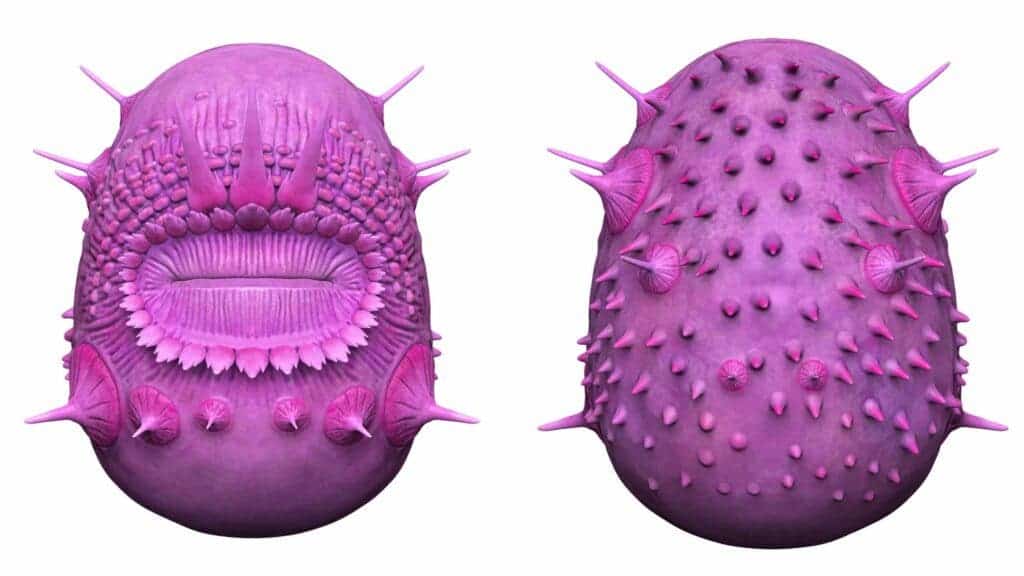Scientists have solved an evolutionary conundrum involving a 500-million-year-old microscopic creature that intriguingly, has no anus. When discovered in 2017, it was reported the fossil of this marine beast could be humans’ earliest-known ancestor. Now, new evidence suggests it was probably an early ancestor of crabs and spiders — so you’re probably not really related to this guy.

The animal, Saccorhytus coronarius, was first placed into a group called the deuterostomes. These are primitive ancestors of vertebrates, including humans. But curiously, deuterostomes animals typically characterized by their anus forming before their mouth during embryonic development — and this creature doesn’t have an anus at all. Now, researchers in China and the UK are claiming it actually belongs to a group called the ecdysozoans, ancestors of spiders and insects, based on an X-ray analysis of the creature.
“The paper suggested that Saccorhytus was an early member of our own evolutionary lineage, a group of animals known as the deuterostomes. But we had specimens that were better preserved, so we knew immediately that the authors had got it flat-out wrong,” Philip Donoghue, UK researcher and study co-author, told The Guardian.
A strange-looking creature
When discovered in 2017, Simon Conway Morris at the University of Cambridge and his colleagues analyzed 45 poorly preserved Saccorhytus specimens and suggested that a set of small openings near its mouth were the evolutionary precursors to gills now seen in fish. This led them to place the creature under the deuterostomes group.
However, Donoghue and his colleagues now have evidence to say this isn’t the case. The researchers collected several hundred more Saccorhytus specimens, much well preserved than the ones from the previous study. They used a weak acid to dissolve hundreds of kilograms of rock from the same site in China, revealing the fossils.
A closer look at the newly uncovered specimens using scanning electron microscopy and X-ray generated by a particle accelerator revealed three-pointed spikes not seen in the previous fossils. This suggested that the supposed gill-precursors around the Saccorhytus’ mouth were likely holes left over from spikes broken off at their bases.
“There was another layer of tissue preserved that extended up through these holes and created spines,” Donoghue told New Scientist. “Since the interpretation of those holes was the key evidence for interpreting the animal as a deuterostome, the lack of these openings basically pulls the rug from under that interpretation completely.”
Instead, the strangely-looking creature likely belonged to a big group of animals known as the ecdysozoans, which includes insects, crustaceans, and roundworms. The spikes helped it to catch prey, although it’s not clear what it would have eaten. Living animals such as penis worms have the same spines and use them to capture prey, Donoghue added.
The finding suggests that Saccorhytus can’t fill a gap in the fossil record that exists before the sudden appearance of a big diversity of animals. However, the hunt for other early deuterostomes – and perhaps our earliest ancestor – isn’t over, the researchers said, as there are many more enigmatic fossils left to be studied.
The study was published in the journal Nature.









